10,000 Farmers And Ranchers Endorse Green New Deal In Letter To Congress
Nearly 10,000 farmers and ranchers are endorsing the Green New Deal as the climate policy battleground expands from the oil fields to the agricultural fields.
In a letter sent to Congress on Wednesday morning, the newly formed bipartisan coalition U.S. Farmers & Ranchers for a Green New Deal threw its weight behind the sweeping industrial plan outlined in a resolution that Rep. Alexandria Ocasio-Cortez (D-N.Y.) proposed in February.
But zeroing out the country’s planet-heating emissions by mid-century requires a transformation in agriculture as dramatic as shifting the energy sector away from fossil fuels, the letter says.
“We believe these climate goals are achievable,” the letter argues, “but only if the GND includes policies that spur two large-scale transitions: the transition away from fossil fuels toward renewable energy alternatives, and the transition away from industrial agriculture toward family farm-based organic and regenerative farming and land-use practices that improve soil health and draw down and sequester carbon.”
The letter was signed by more than 500 individual farms and 50 organizations representing close to 10,000 members. Regeneration International, a sustainable farming nonprofit, organized the missive with the climate justice group Sunrise Movement. It also hosted a Wednesday morning press conference in Washington.
A month ago, the United Nations released a dire new report urging major changes to food production and land management and warning that emissions cuts alone will fall short of halting catastrophic global warming.
Taking cues from those pushing for a Green New Deal, several Democratic presidential hopefuls have made farming practices central to their climate proposals. Sen. Bernie Sanders (I-Vt.) earmarked $410 billion in his Green New Deal proposal to help “farms of all sizes transition to ecologically regenerative agricultural practices.” Sen. Elizabeth Warren (D-Mass.) called for breaking up agriculture monopolies as part of her broad rural platform. South Bend, Indiana, Mayor Pete Buttigieg vowed to “support farmers” by “paying them to capture carbon.”
Yet even as farmers reel from the effects of President Donald Trump’s trade war with China, Democratic candidates are far from guaranteed their votes. Farmers supported the Trump administration’s proposal last week to finalize the rollback of the Obama-era Waters of the U.S. rule, which had put new restrictions on which waterways agribusiness could pollute. Early on, Republican opposition to the Green New Deal itself coalesced around the idea that such a program would ban beef production, although supporters have clearly said it would not.
“We call on Congress to put the ‘Green’ in the Green New Deal,” Wednesday’s letter reads, “by empowering us to revitalize the health and economic security of this country’s middle class, to make family farming economically viable again, and to help reverse climate change and improve America’s air and water quality by making our ecosystems healthy again.”
Related Coverage
Green New Deal Emerges As Wedge Issue On Climate Change In Democratic Debate
United Mine Workers Doubt Green New Deal Promises: ‘We Don’t Believe It’
Democrats' Climate Forum Exposes Rifts On Fracking, Nuclear Power And The Filibuster
Also on HuffPost
バングラデシュ
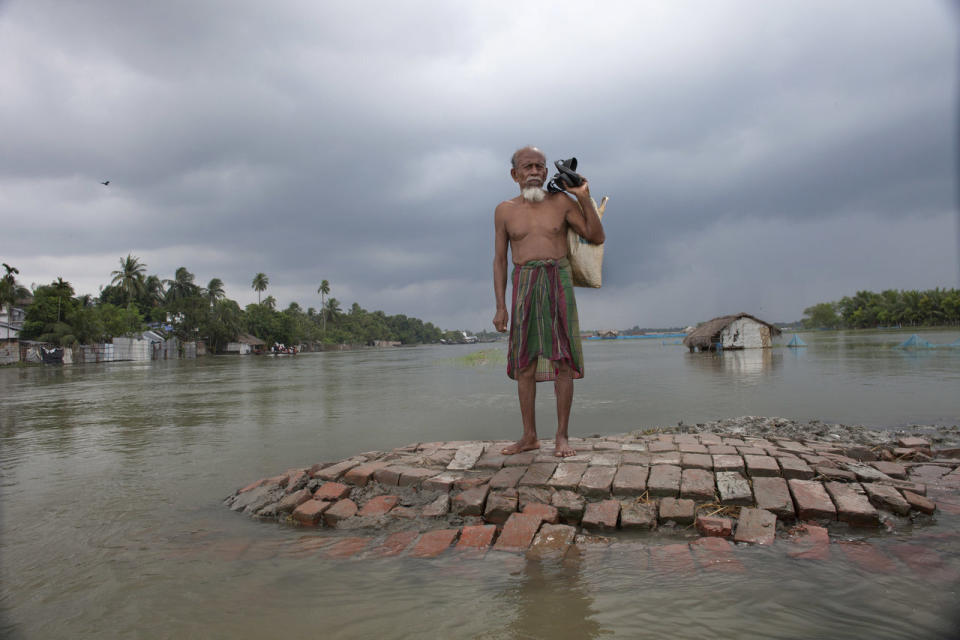
また、EUのグローバル気候変動同盟(GCCA)は「すでに沿岸部や乾燥・半乾燥地域では、洪水、熱帯低気圧、高潮、干ばつが頻発している」と報告している。
バングラデシュのシェイク・ハシナ首相は9月にハフポストUS版に寄稿し「バングラデシュは、気候変動の脅威に最もさらされている国です。気候変動と、気候変動が与えるその影響と闘うためには、明確なゴールが重要です」と述べている。また、2015年の降水量が例年より50%増え、農作物が深刻を受けたことに触れ「パリの気候変動会議では、測定可能で検証できる排出量削減目標を定めなければなりません」と強調した。
上の写真は2011年にバングラデシュ南西のサトキラ地区で起こった洪水の様子だ。男性がレスキューボートを待っている。
チャド
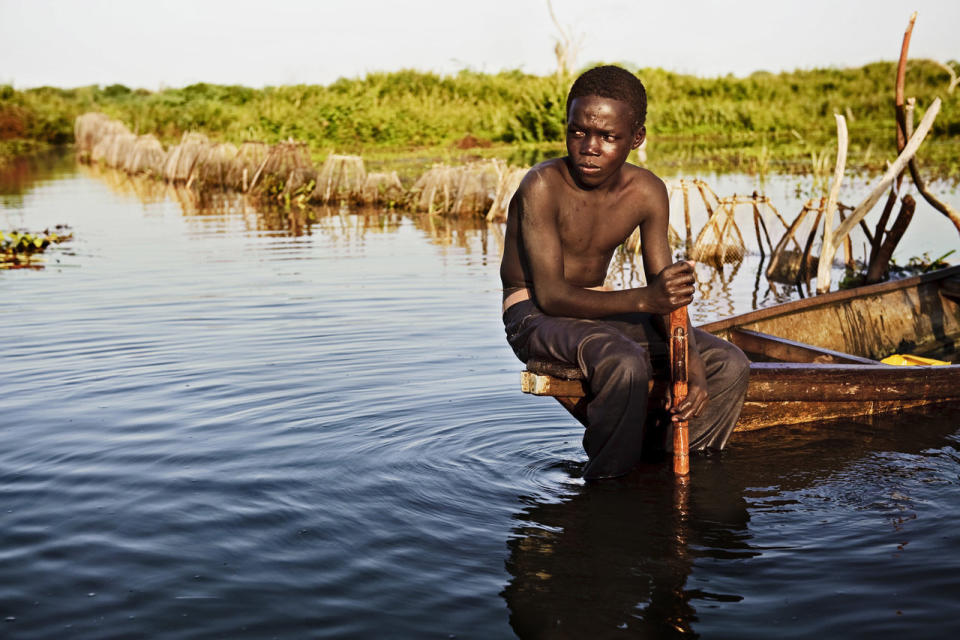
チャドはアフリカで最も貧しい国のひとつで、大規模な自然災害に対処するための十分な設備がない。GCCAの報告書は「自然災害によって深刻な干ばつや破壊的な洪水が増加する可能性があり、農業、畜産、漁業、健康や住宅へ大きな打撃を与えるだろう」と伝えている。
気候変動による被害が最も顕著なのはチャド湖だ。国連によれば、湖の大きさは1963年と比較して20分の1に縮んでいる。
上の写真は、かつては世界で最も大きな湖のひとつだったチャド湖だ。ニジェール、ナイジェリア、カメルーンといったチャド湖に面するその他の国々も、気候変動と湖の面積が縮んだことによる影響を受けている。
パリの気候変動サミットで、ナイジェリアのムハンマド・ブハリ大統領は「チャド湖に面している国々は、お互いが直面している課題についてさらに詳しく話し合い、この問題を一日も早く解決しなければなりません」と語った。
太平洋の島々

10万5000人が住み、33の島国からなるキリバスは平均標高が2mもない。Webマガジン「Slate」によれば、パリの気候変動会議でアノテ・トン大統領は「島に人が住めない状態になった時は島民を保護するとフィジーが申し出てくれている」と語っている。
上の写真は9月に撮影された。キリバスの村民ベイア・ティームは、以前は3~4年に一度起こっていた異常な高潮が今は3カ月おきに発生し、ほとんどの井戸が海の下に沈んでしまった、と話す。
キリバスに助けの手を差し伸べたフィジーも、自然災害に直面している。10月に行われた太平洋諸国の会議でラトゥ・イノケ・クンブアンボラ外相は、気候に影響を受けやすい腸チフスやデング熱、レプトスピラ症、下痢性疾患がフィジーで再び増えていると述べたとガーディアン紙が伝えている。
ニジェール
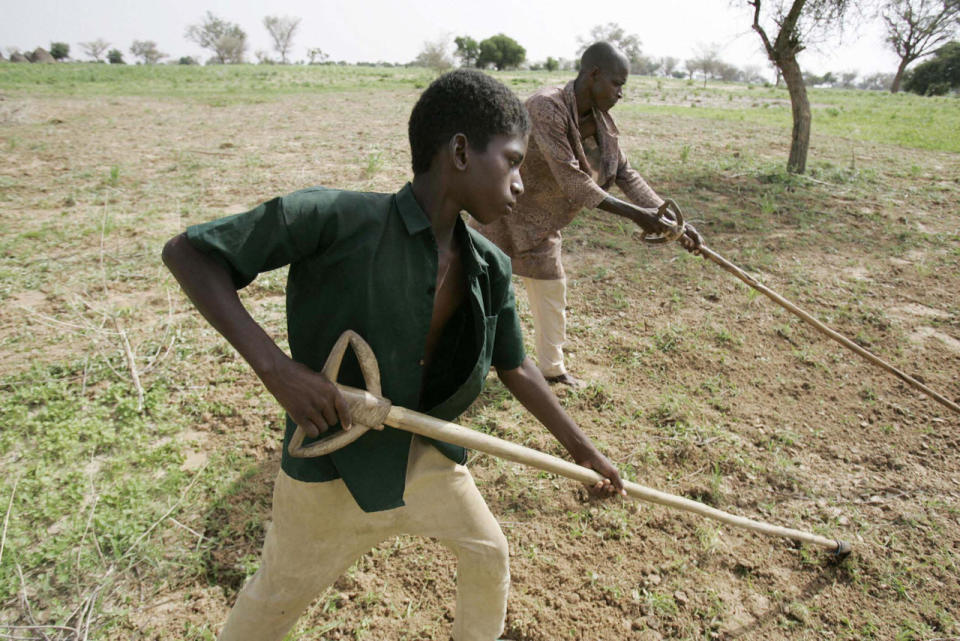
2013年には世界銀行のエコノミスト、エル・ハッジ・アダマ・トゥーレ氏が次のように述べている。「気候リスクにさらされ、さらに内陸国であるニジェールは、世界で最も温暖化の影響を受けやすい国のひとつです」「状況を複雑にしているのは、国内と地域それぞれで抱える過激派です。これらの要因が農業に影響を与えることで、食料や栄養の問題に発展します」
ニジェールは世界で最も出生率の高い国だ。女性1人あたりが産む子供は7.6人で、2031年までに人口が2倍に増加すると予想されている。気候変動で農業が打撃を受ければ、多くの国民が食料不足に苦しむ可能性がある。
上の写真は農作業をするニジェール人の少年と父親だ。2005年に撮影された。
ハイチ
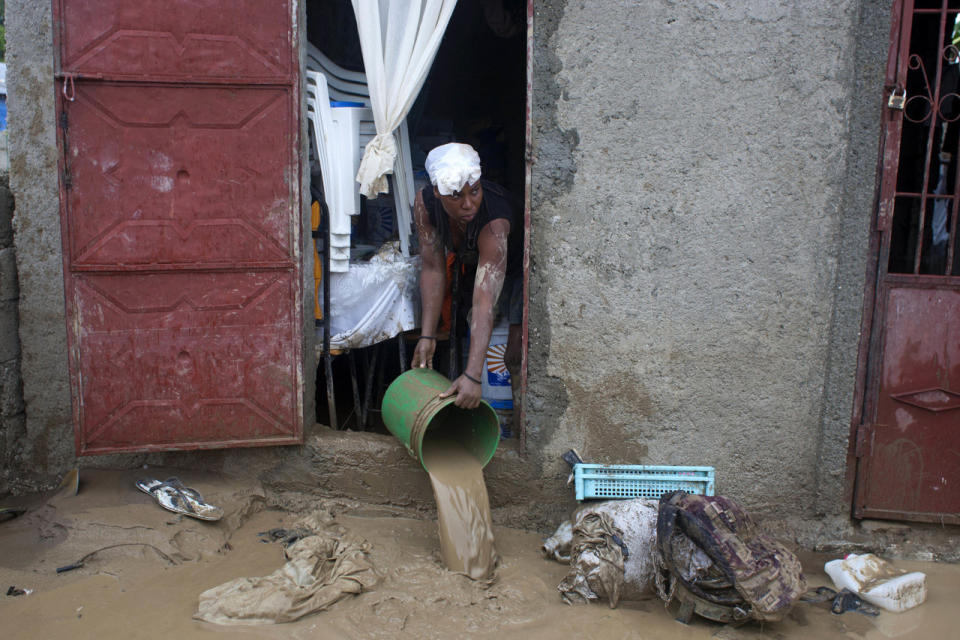
コンゴ民主共和国
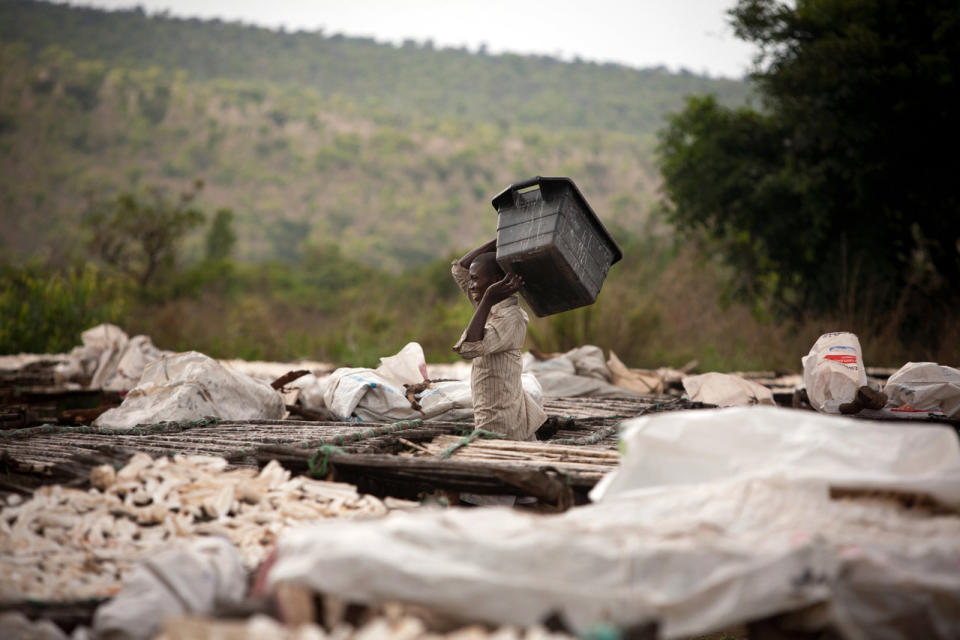
コンゴでは90%近くの人が農業で生計を立てているが、気候変動により中央部に位置するコンゴ盆地では豪雨、洪水、地すべり、土壌の浸食が発生し、農作物が大きな打撃を受ける可能性があるとBBCが伝えている。逆に南部のカタンガでは、2020年までに雨季が少なくとも2カ月短くなるだろうと予想されている。
また、温暖化によってマラリアや心臓血管病、水を介する感染症が増えるとも予測されている。
上の写真は、CO2を吸収するアカシアの木々の間でキャッサバを育てるコンゴ人男性。国連の地球温暖化防止条約で「CO2排出量の多い国」と登録されたことを受け、温暖化防止に取組んでいる。
アフガニスタン
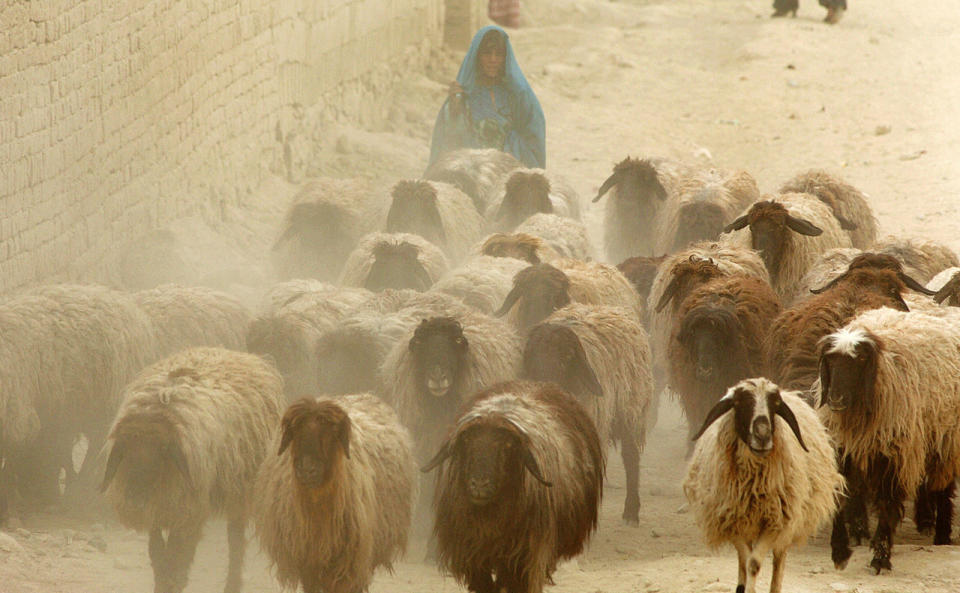
中央アフリカ共和国
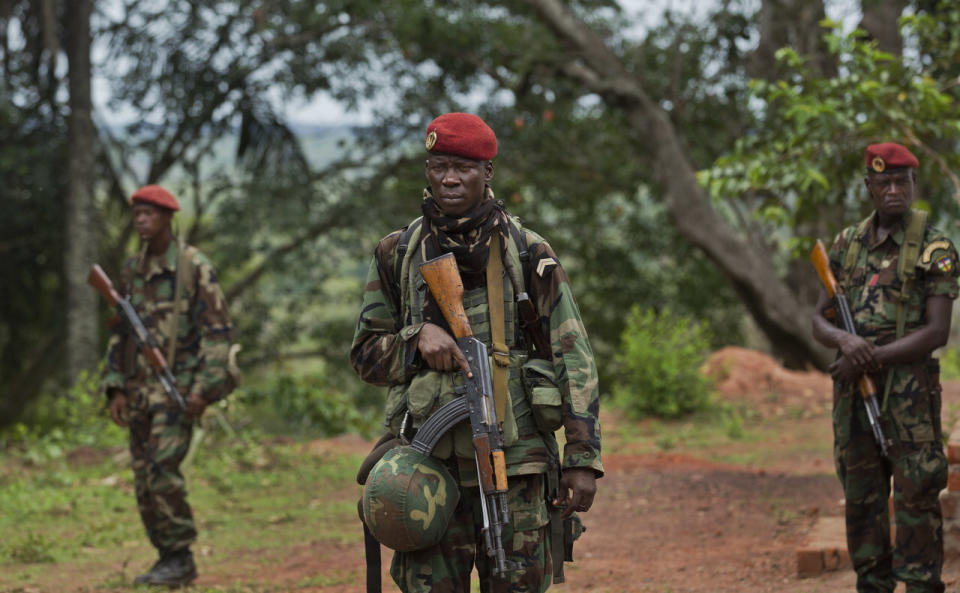
森林の研究機関「国際林業研究センター」の科学者のデニス・ソンワ氏は「状況に適応する能力をつければ、国を発展させることができます。誰もが参加できるような仕組みを作ることによって、紛争を減らし国内の緊張を和らげるでしょう」と語った。
ソンワ氏によれば、中央アフリカ共和国では、いまだにかんがいシステムが整備されておらず、雨季に降る雨に頼る昔ながらの農法が使われている。
一方で、首都バンギでは何度も洪水が起き、年間平均700万ドルの損害が出ているとガーディアン紙は伝える。
上の写真は、アメリカ陸軍特殊部隊との会議が行われている建物を警備する中央アフリカ共和国軍の軍人だ。
ギニアビサウ
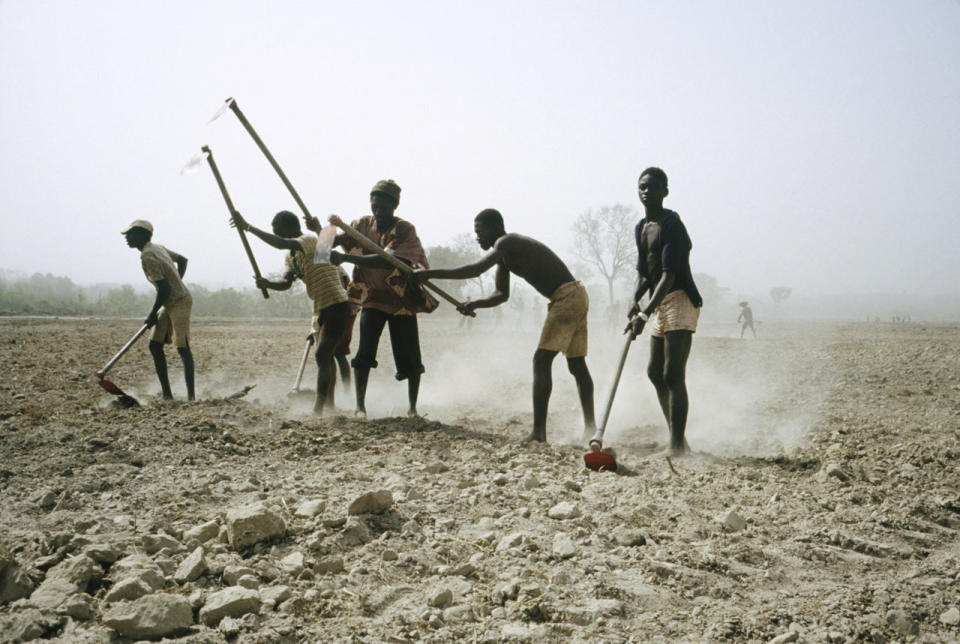
ギニアビサウもかんがいではなく、雨に頼って農業をしており、これがすでに問題となっている。
報告書には「気温の上昇にともない、あちこちで雨の降り方が不規則になっている。そして地表から蒸発する水蒸気の量が急激に増えたことで、農作物の生産が落ち、土壌が浸食されるようになった」と書かれている。
上の写真は、ギニアビサウの都市コントゥボエル近郊で水田を耕す農夫たちだ。
Love HuffPost? Become a founding member of HuffPost Plus today.
This article originally appeared on HuffPost.

